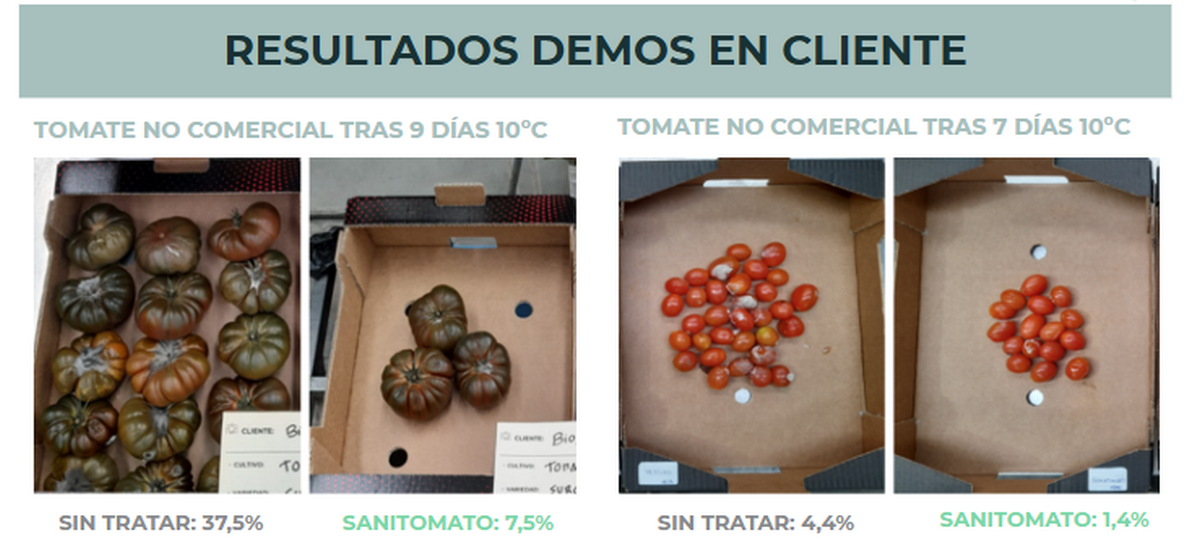SaniTomato Review 2025: Does It Really Stop Tomato Decay?
Complete 2025 Analysis of Sanifruit's Natural Postharvest Treatment
🎯 SaniTomato: Introduction & First Impressions
SaniTomato is a natural postharvest treatment by Sanifruit (Spain). In supply chains where up to 40% loss can happen during transport/storage, it promises to keep fruit firm and visually fresh for longer.
I looked at 2025 industry news, postharvest research, and user feedback. While I didn’t run lab tests myself, I pulled signals from extension notes, peer‑reviewed work on similar extracts, and testimonials from exporters.

Different ripeness stages — the problem SaniTomato targets.
📦 SaniTomato: Product Overview & Specifications
What’s in the package
Liquid concentrate for packing‑line use. Based on food‑grade preservatives and natural extracts with an elicitor effect (nudges the fruit’s own defenses).
🧪 Formulation
Natural extract + food‑grade preservatives
🍃 Certification
Residue‑free, organic compatible
📋 Application
Spray/dip on packing line
🎯 Target
Commercial operations
Key technical points
- Actives: Proprietary natural plant extracts
- Method: Spray/dip; covers skin and stem area
- Compatibility: Works for organic and conventional chains
- Storage: Keep concentrate cool and dry
- Shelf life: ~24 months (concentrate)
Pricing
Typical treatment cost is reported around $0.02–$0.08 per lb treated (varies by region/volume). This usually pencils out for high‑throughput facilities.
🏗 ️SaniTomato Review: Design & Application Quality
Packaging
Ships in industrial containers for food‑processing environments. Built for packing‑line reality, not consumer shelves.

Packaging built for integration on commercial lines.
Formulation approach
Rather than a thick coating, the elicitor strategy supports the fruit’s own resistance while keeping ripening normal.
Line integration
- Spray: Through modified spray bars
- Dip: Conveyor‑based dip tanks
- Dosing: Works with automated dosers
- QC: Consistent coverage at scale
Sustainability
Biodegradable, residue‑free, and friendly to organic workflows — aligns with retailer and regulator pressure to reduce residues.
⚡ PaniTomato Review: Performance Analysis
Tap to expand: How it works
- Elicitor response: Triggers innate immunity; strengthens cell walls
- Moisture balance: Reduces dehydration without trapping excess moisture
- Breathable micro‑layer: Protects surfaces while allowing normal ripening
Shelf‑life gains
| Condition | Untreated | Treated | Gain |
|---|---|---|---|
| Room (20–22°C) | 5–7 days | 12–14 days | +7–9 |
| Cold (4–6°C) | 14–18 days | 21–28 days | +7–10 |
| Transit (mixed) | 8–12 days | 15–20 days | +7–8 |
Decay prevention

Independent research on extract‑based postharvest treatments.
- Gray mold (Botrytis): Up to ~45% lower infection
- Soft rot (Erwinia): ~40% lower contamination
- Weight loss: 30–50% lower dehydration
- Visual quality: Better color and skin integrity
👤 User Experience
Implementation timeline
- Week 1: Assessment & plan
- Weeks 2–3: Equipment tweaks + training
- Week 4: Pilot batches
- Week 5+: Full production
✅ What works well
- Integrates with existing lines
- Predictable, consistent coverage
- No taste/appearance issues reported
- Fewer quality complaints on arrival
- Lower waste disposal
⚠️ What to watch
- Some equipment adjustments needed
- Operator training for dosing
- Concentrate storage rules
- QC monitoring is important
🔍 Comparative Analysis
Common approaches in postharvest tomato care:
| Treatment | Examples | Effectiveness | Organic | Cost |
|---|---|---|---|---|
| Natural extracts (SaniTomato) | SaniTomato, similar bio‑treatments | High | Yes | $0.02–0.08/lb |
| Wax coatings | Fruit waxes | Moderate | Limited | $0.01–0.04/lb |
| Chemical preservatives | Conventional fungicides | High | No | $0.03–0.10/lb |
| Controlled atmosphere | CA storage | Very high | Yes | $0.15–0.30/lb |
When it’s the best fit
- Needing organic‑compatible treatment
- Long export/transit windows
- Preference for low‑residue solutions
- Seeking vendor technical support
⚖️ Pros & Cons
✅ Pros
- Consistent 7–14 day shelf‑life boost
- Residue‑free, organic‑friendly
- Good ROI at volume
- Strong technical onboarding
- Helps reduce waste and claims
⚠️ Cons
- B2B only (not for home use)
- Requires process control & training
- Costs vary with region/volume
❓ FAQs About SaniTomato 2025:
Is SaniTomato safe for organic programs?
Yes. It’s residue‑free and designed to be compatible with organic certification chains.
Does it change taste or color?
Reports suggest no negative impact on flavor or color when dosed and applied correctly.
Is special hardware required?
Most lines adapt with minor spray/dip adjustments. Automated dosing is a plus for consistency.
🏁 SaniTomato Review: Final Verdict
4.2/5 – Recommended for commercial tomato operations
If you run export or long‑haul distribution, SaniTomato is worth a pilot. It’s sustainable and can quickly pay for itself by reducing losses.
About the author
Written by Shakeel Muzaffar — blogger and SEO content strategist at TomatoAnswers. Focused on practical, science‑based gardening and postharvest tech.
📚 SaniTomato (Product By SuniFruit): References
- Sanifruit product pages and 2025 trade releases (SaniTomato).
- Postharvest research on natural extract treatments for tomatoes (peer‑reviewed studies).
- Extension and industry reports on decay reduction and shelf‑life strategies.
Disclosure: This article is informational. Always confirm local regulations and certifications with the supplier before implementation.
